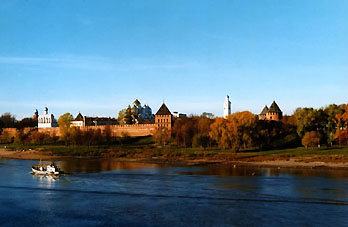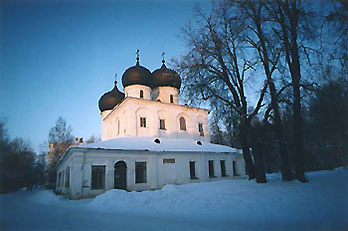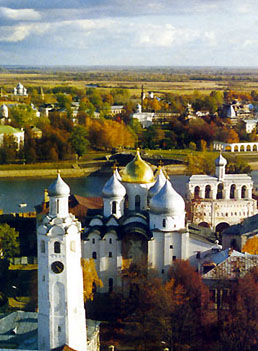
In 988 Russia became Christian, which made Novgorod principality closer to European countries.
During XI - XII centuries Novgorod was the center of the large territory, extended up to the North ocean.
Several centuries Novgorod had republican government system. Novgorod republic was formed in 1136 and lived till 1478, when it became a part of Moscow state. During the republic time all the main city problems were solving the people assembly - veche. Veche was responsible for assigning the city mayor and for inviting noblemen to solve political problems and to lead the city army.

In 1862 the monument to 1000 years of Russia was built in the Novgorod Kremlin. This is the only monument in the world, devoted not to a certain event, but to a thousand years of Russian history.
During the World War II Novgorod was occupied by Hitler's invaders and totally destroyed. After the war city underwent the grandiose reconstruction of the historical treasures.
From 1944 Novgorod is a center of state territorial unit: Novgorod region.
In 1999 city returned its original name - Velikii Nobgorod (Novgorod the Great). By this nme the city was known during its golden age.
Novgorod - one of the oldest citis in Russia. First mentioning about it is dated by 859.
In 862 Novgorod became the first capital of the state of Russia. however, already in 882 prince Oleg moved the capitol to Kiev, currently the capital of Ukraine.
Famous "way from Varangians to Greeks" went through Novgorod. City was in the close contact with the Slavs as well as with Scandinavians. Also, Novgorod was a member of Gase union, which included at that time the most economically developed cities of the Baltic sea region.

During the mongol-and-tatar invasion Novgorod stayed independent due to political skills of prince Aleksandr Nevskiy.
Hundred years after joining Moscow, Novgorod reserved independence. This was against the will of Moscow tsar Ivan the Terrible and in 1570 he ordered to destroy the city. 3000 Novgorod residents were killed. Novgorod was unable to fully rehabilitate and its impact on political and economical life of Russia started to decline.
